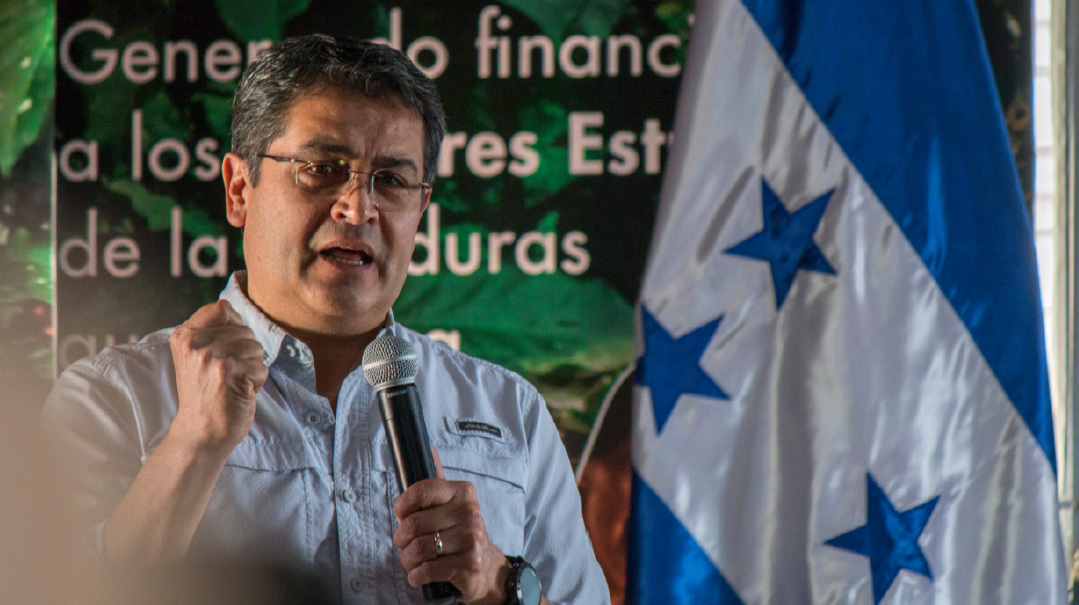In the Perfect Measure

Rav Chaim took those chovos far more seriously than many others take their monetary debts
I
had not intended to write this week about Maran Harav Chaim Kanievsky ztz”l. I feel unworthy of doing so. True, at a certain level, there is no one worthy of writing about him. But nevertheless, some are more unworthy than others.
His determination to truly know kol haTorah kulo, not as a figure of speech for someone who knows a very great deal, but as an actual reality, was unique in our generation, and likely for many generations preceding. And I have no connection to that, nor to the discipline and determination that gave rise to such vast knowledge.
When my nephew Rabbi Eliyahu Rosenblum asked me whether I would be interested in hearing his perspective on Rav Chaim, however, I jumped at the chance. From his first year in Chevron yeshivah, Eliyahu began addressing sh’eilos in learning to Rav Chaim. At one point, he was sending an average of 20 sh’eilos a week, until he received a message that Rav Chaim could not write to him a thousand letters a year. He feared that he had angered Rav Chaim, but was assured that Rav Chaim only wanted him to cut down a bit on his letters, and he would always be prepared to discuss all his sh’eilos in person when he came to Bnei Brak.
My nephew long ago took Rav Chaim as a model for his own learning, covering vast ground in Torah with annual chazaros. But above all, he is a deep thinker, whose take on a wide variety of matters always provides me with an original perspective. I offer that perspective now only as an addendum to last week’s superb overview of Rav Chaim’s achievements and personality.
Rav Chaim Ozer Grodzenski said of the Chofetz Chaim that his tzidkus shone so brightly that many missed his singular greatness in learning. Similarly, my nephew maintains, Rav Chaim’s phenomenal breadth of Torah knowledge prevented people from fully grasping his sheleimus hamiddos (not to mention how penetrating was his analysis).
Reb Eliyahu’s starting point is a statement of the Vilna Gaon (See Imrei Noam on Berachos 33b) that sheleimus hamiddos is when someone possesses simultaneously both sides of a particular middah — for instance, apparent cruelty and overflowing mercy.
Rav Chaim’s adherence to his schedule was legendary. He davened in the vasikin minyan every morning, Minchah Gedolah at the earliest possible moment, and with the first Maariv in the evening. Every year, when he arrived at a certain daf in Yerushalmi, he would comment that on that day he had missed Minchah Gedolah because his wife was giving birth at that time.
Normally, one who maintained such a precise schedule would be expected not to take on too many commitments, so as to avoid occasions when it might be impossible to adhere to the schedule. Yet beginning around the time of the 1991 Gulf War, Rav Chaim began to accept sandek kos, even outside of Bnei Brak. In one day, he might attend a bris in Tzfas in the morning, another in Yerushalayim around midday, and a third in Ashdod toward the end of the afternoon.
One who led such a strictly regimented life might be expected to be emotionally closed. Yet Rav Chaim did not hide his feelings. After his rebbetzin’s petirah, he confided to a visiting rabbi from the States, “I miss her so much.” He and Rebbetzin Batsheva Esther always sought out opportunities to be together: answering Amen to one another’s birchos hashachar; the Rebbetzin reading to him requests for blessings. He would not begin eating until she had joined him. And his joy in the company of his offspring was palpable.
Rav Chaim spoke often of the heavy chovos (debts) that he owed — a reference to his unfathomable daily quotas of learning. And he took those chovos far more seriously than many others take their monetary debts.
That overwhelming sense of obligation and the attendant pressures would in most cases cause a person to live in a perpetual state of nervousness, and to become short-tempered or depressed as a consequence. But Rav Chaim was surrounded by an aura of peacefulness and calm. He never raised his voice, though on rare occasions he might show irritation — kaas b’panim. His speech was measured carefully, but laced with dry quips.
His memory was computer-like — or better. A friend of mine once asked him how many times Moshe’s name appears in Chumash. Rav Chaim answered quickly, but my friend told him the Bar Ilan program gives an answer of two more times. Rav Chaim immediately explained that the letters mem-shin-hei appear two more times, but not in reference to Moshe Rabbeinu, and quoted the two instances.
Yet there was no room in his brain for anything that was not connected to Torah. He did not know the street names of Bnei Brak, and Rebbetzin Batsheva Esther would remind him after a meal what he had eaten so that he could recite the proper brachah acharonah.
As long as Rav Chaim felt he bore responsibility for someone or that he should seek mechilah from someone, that person’s face was indelibly etched in his brain. But when the responsibility was fulfilled or the mechilah obtained, the image was automatically erased. A bochur had become engaged, but began to have doubts about a certain aspect of the shidduch and went to see Rav Chaim. The latter told him that he should break the shidduch.
Every time that Rav Chaim saw the young man after that, he inquired about how his shidduchim were going. Finally, the bochur became engaged again and went to share the good news with Rav Chaim. On subsequent occasions when he visited Rav Chaim, the latter did not recognize him, for he no longer bore any responsibility for his well-being.
While Rav Chaim may have forgotten the kind of everyday details that most of us retain in our memory banks, his commitments were sacrosanct and were remembered, often for a very long period of time. Once a friend asked him why he was not going to the chasunah of someone with whom he had learned in Lomza yeshivah. Rav Chaim did not answer directly, but simply told the questioner that he would attend his chasunah. When that occasion arrived five years later, however, Rav Chaim asked him for mechilah but pleaded other obligations that evening.
When the same person invited Rav Chaim to a child’s chasunah, however, the latter replied immediately: “I still owe you, and I will come.”
Rav Chaim was extremely generous with his own slender sources of income. Though he inherited the exclusive rights to the seforim of his father, the Steipler Gaon, he gave all the proceeds from the sale of Kehillos Yaakov to his widowed sister, and until 2002, he would eat a small breakfast with her every morning. When Otzar Seforim contacted him about putting his volumes of seforim on their site, he readily agreed, unlike some other authors who worried that doing so would cut into their sales.
Many people who are very breit with their own money assume that everyone else is like them and are not so careful about causing any loss to others. Not so Rav Chaim. One day, he was looking for a pen to jot something down. His son-in-law offered him a simple pen, but he refused, explaining that it is common to place cheap writing implements in one’s pockets and forget that they were borrowed. He did not wish to run the risk of gezeilah.
Rav Chaim knew his own mind with absolute clarity. But he was also able to put his opinions in the context of other Torah values. As is well known, he followed his uncle, the Chazon Ish, in his opposition to men wearing watches, the fancier the worse. But as long as his father-in-law, Rav Yosef Shalom Elyashiv, was alive, he did not express his opposition, as he knew that Rav Elyashiv, the preeminent posek of the generation, permitted men to wear watches.
Rav Chaim was a very private person who preferred to learn in quiet. But his rebbetzin was very people-oriented, constantly dispensing advice, encouragement, and solace to thousands who came to see her. Their Shabbos table was always filled with yeshivah bochurim. For Rav Chaim, it was enough that his rebbetzin relished the opportunity to help so many. Even after her passing, the sheer number of descendants ensured that his home was never empty, and Rav Chaim continued with his regular kabbalat kahal. But Rebbetzin Leah Kolodetsky, who took over her mother’s activities on behalf of all those in need of a listening ear, did so in another location nearby.
Rav Chaim learned with all his sons prior to their bar mitzvahs, finishing either all Shas Mishnayos or Shas itself. Once a visitor to the Steipler found a young boy bouncing a ball against the wall of the building where the Steipler lived. He asked the boy what he was learning, and the boy replied that he was learning Niddah. He then added that he was finishing Shas prior to his bar mitzvah with his father, Rav Chaim.
On the one hand, there was no subject of Torah Hakadoshah that was off limits for Rav Chaim’s young son. On the other hand, he was still a boy and playing with a ball was perfectly age appropriate.
It was often said of Rav Chaim that he was not born with preternatural gifts — and this was equally often refuted by those who brought him difficult questions in learning on obscure topics. A cheder rebbi in America once tried to encourage a faltering talmid that he could achieve greatness in Torah, just as Rav Chaim had done. When that rebbi’s young son became seriously ill sometime later, he feared that it was a consequence of having spoken derogatorily of the gadol hador, even though he had intended something quite different. He called Rabbi Eliyahu Mann, one of those closest to Rav Chaim, to beseech Rav Chaim for mechilah.
Rabbi Mann explained the matter to Rav Chaim. The latter told him that he had once seen a book in his father’s house, in which the author asserted that the Chazon Ish, whose sister was Rav Chaim’s mother, had also not been viewed as particularly brilliant as a child. Penciled in the margin was the Steipler’s comment, “Sheker v’motzi shem ra.” When he related this story, Rav Chaim laughed and said, “But he could have said it about me. Even today, I’m not kishroni [talented].”
Rabbi Mann related that whole conversation to Rav Michel Yehudah Lefkowitz, under whom Rav Chaim had studied as a young teenager, and Rav Lefkowitz told him that even at that age, Rav Chaim’s outstanding kishronos were evident.
Rabbi Mann returned to Rav Chaim to share Rav Lefkowitz’s words, but Rav Chaim had no patience for any more discussion of his natural gifts, which were, in any event, of no matter to him, and simply told Rabbi Mann, with respect to the cheder rebbi in America, “Machul lo, machul lo, machul lo.”
In his lifetime, all asked the same question about Rav Chaim: where do his miraculous kochos come from? Rav Aharon Leib Steinman ztz”l identified the source as his elevated middos — his overwhelming love of his fellow Jews, his refusal to let any negative emotion ever disturb his peace of mind or take away from his learning.
May his merit continue to protect Klal Yisrael.
(Originally featured in Mishpacha, Issue 905. Yonoson Rosenblum may be contacted directly at rosenblum@mishpacha.com)
Oops! We could not locate your form.







